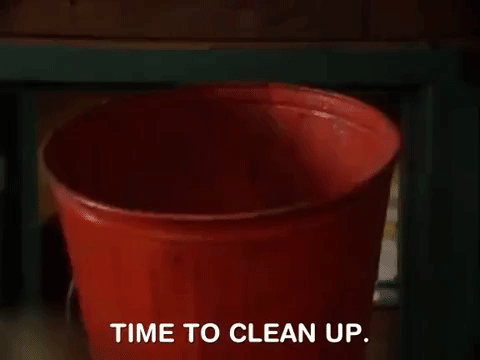How to Clean Sofa Cushions: A Complete Guide
Nothing beats the feeling of sinking into a cozy sofa after a long day. However, over time, your sofa cushions may start to accumulate dirt, dust, and stains. Not only does this detract from the appearance of your living space, but it can also affect your indoor air quality. That's why it's essential to clean your sofa cushions regularly.
SUMMARY:
Why Cleaning Your Sofa Cushions Is Important
There are several reasons why you should clean your sofa cushions. First and foremost, it's crucial for maintaining a healthy living space. Dust mites, pet dander, and other allergens can accumulate in your cushions, which can trigger allergic reactions and respiratory issues. Additionally, regular cleaning can prolong the life of your cushions, preventing wear and tear and reducing the need for replacements.
But cleaning your sofa cushions isn't just about practicality. It can also have aesthetic benefits. By removing dirt and stains, you can restore the appearance of your sofa and make it look like new again.
Understanding Your Cushion Cover Fabrics

Before you start cleaning your sofa cushions, it's essential to understand the type of cushion cover fabric you're dealing with. Different fabrics require different cleaning techniques, and using the wrong method can damage your cushions.
Linen cushion covers are a popular choice for those who want a lightweight and breathable fabric. However, linen is also prone to wrinkles and stains. Velvet cushion covers, on the other hand, offer a luxurious and soft feel, but can be difficult to clean due to their delicate fibers. Faux fur cushion covers provide a cozy and warm texture but can trap dirt and dust easily. Knitted cushion covers are another popular choice, but their knitted texture can also make them prone to snagging and damage during cleaning.
How to Clean Velvet Cushion Covers

Velvet cushion covers are luxurious and soft to the touch, but they can be tricky to clean. Here are some tips for cleaning your velvet cushion covers:
- Use a soft-bristled brush to remove any surface dirt or debris from the cushion cover.
- If the cushion cover has a stain, mix a small amount of mild detergent with water and apply the solution to the stained area.
- Gently rub the solution into the stain with a soft-bristled brush, then rinse the cushion cover thoroughly with water.
- Blot the cushion cover with a clean, dry cloth to remove excess water, then let it air dry completely.
- Do not use heat to dry velvet cushion covers, as it can cause the fabric to shrink or become damaged.
How to Clean Faux Fur and Knitted Cushion Covers
Faux fur and knitted cushion covers require special care to maintain their softness and texture. Here's how to clean them:
- Remove any surface dirt or debris from the cushion cover with a soft-bristled brush or by shaking it out.
- Hand wash the cushion cover in cold water with a gentle detergent, then rinse it thoroughly with water.
- Gently squeeze out excess water, then reshape the cushion cover and let it air dry completely.
- Do not machine wash or dry faux fur or knitted cushion covers, as it can damage the fabric and ruin their texture.
Cleaning Linen Cushion Covers

If your cushion covers are made of linen, the cleaning process can be a bit different from other fabrics. Linen is a delicate material that requires extra care when washing to prevent damage or shrinkage.
To clean linen cushion covers, follow these steps:
- Read the care label: Always check the care label for specific cleaning instructions. Some linen cushion covers may be dry clean only.
- Spot clean stains: If there are any stains on the linen cushion covers, use a clean cloth or sponge and a mild detergent to gently blot the stain. Avoid rubbing or scrubbing, as this can damage the fabric.
- Hand wash: If the care label allows for hand washing, fill a sink or basin with lukewarm water and a mild detergent. Gently agitate the cushion covers in the water for a few minutes, then rinse thoroughly with clean water.
- Machine wash: If the care label allows for machine washing, use a gentle cycle and cold water. Use a mild detergent and avoid overloading the machine.
- Air dry: After washing, hang the linen cushion covers to air dry. Avoid using a dryer, as the heat can cause shrinkage or damage to the fabric.
By following these steps, you can effectively clean your linen cushion covers and keep them looking fresh and new for longer.
General Tips for Cleaning Sofa Cushions

Regardless of the fabric of your cushion covers, here are some general tips for keeping them clean and fresh:
- Vacuum your cushions regularly: Use a handheld vacuum or the upholstery attachment on your regular vacuum to remove any dirt, dust, or debris that may have settled on your cushions.
- Spot clean stains immediately: If you notice any spills or stains on your cushions, clean them up as soon as possible to prevent them from setting in. Blot the area with a clean, damp cloth or sponge, and avoid rubbing the stain, which can spread it further.
- Use a mild detergent: If you need to clean your cushion covers more thoroughly, use a mild detergent mixed with water. Avoid harsh chemicals or bleach, which can damage the fabric and cause discoloration.
- Avoid machine washing: Unless the care instructions on your cushion covers specifically indicate that they can be machine washed, it's best to avoid this method, as it can damage the fabric and cause shrinkage.
- Air dry: After cleaning your cushion covers, avoid using a dryer, which can also cause shrinkage and damage to the fabric. Instead, air dry them by laying them flat or hanging them up in a well-ventilated area.
Conclusion: Clean Cushions for a Fresh Living Space

Regularly cleaning your sofa cushions is an essential part of maintaining a fresh and inviting living space. By understanding the different fabrics and following the proper cleaning techniques, you can keep your cushions looking and feeling like new for years to come. Remember to always check the care instructions on your cushion covers and to avoid using harsh chemicals or methods that can damage the fabric. With these tips and techniques, you can enjoy a clean and comfortable living space that you can be proud of.








